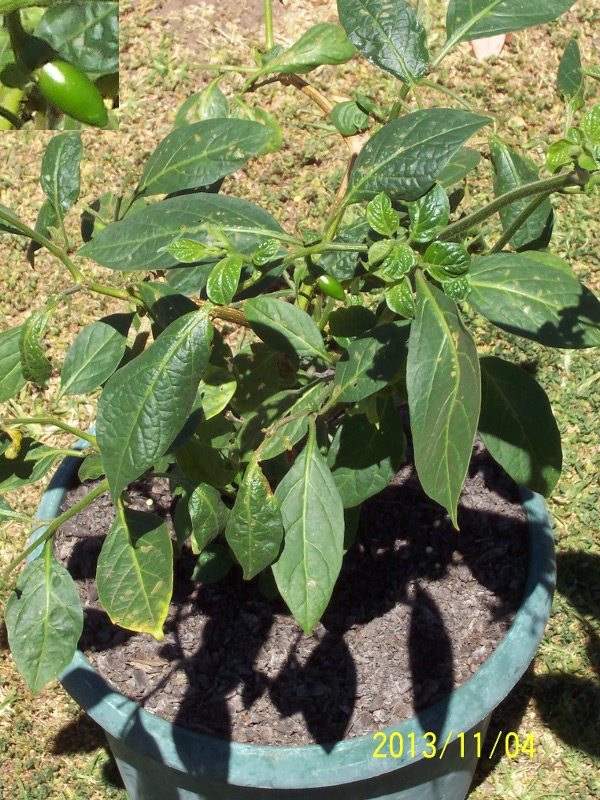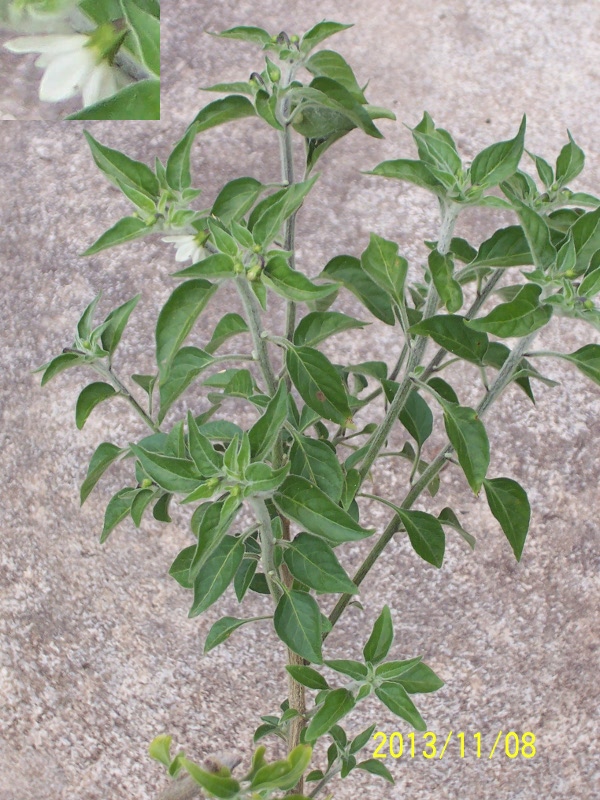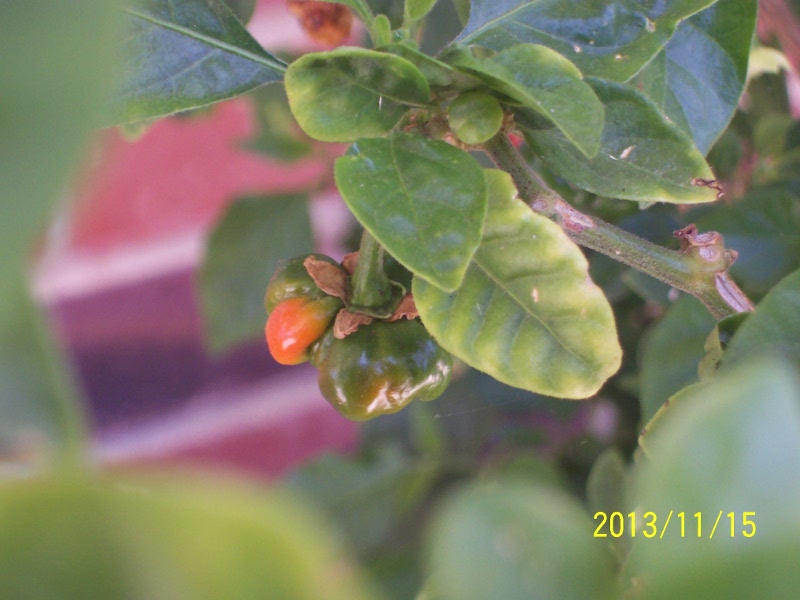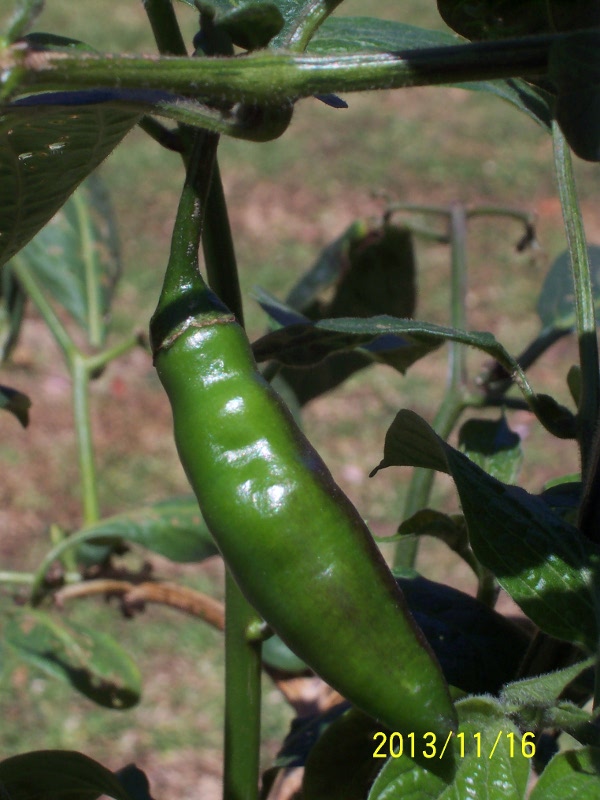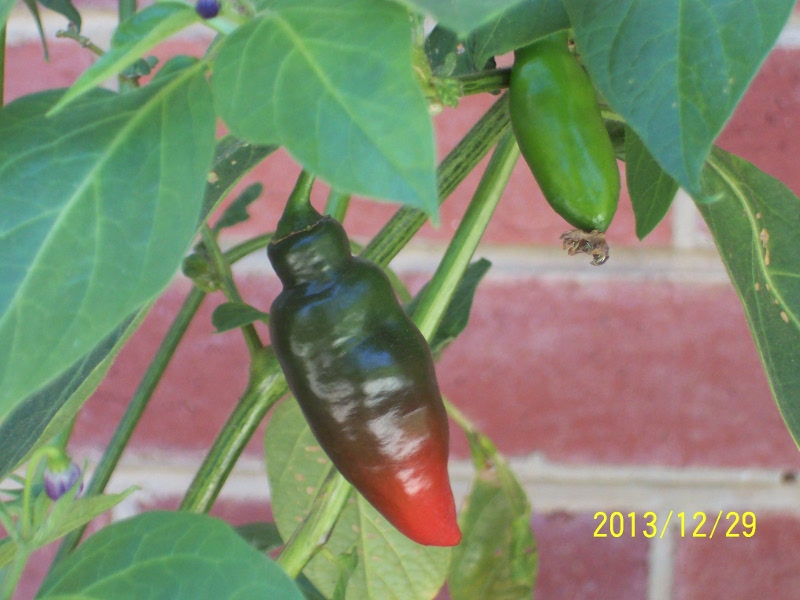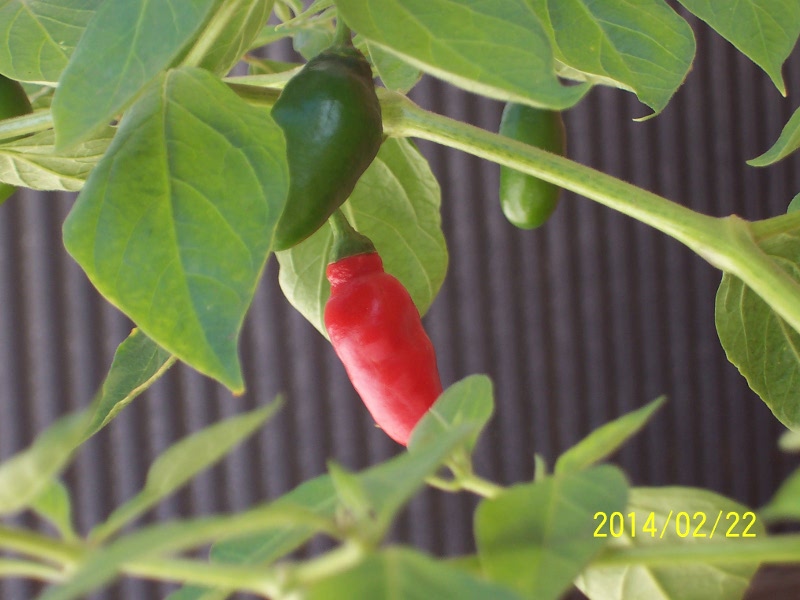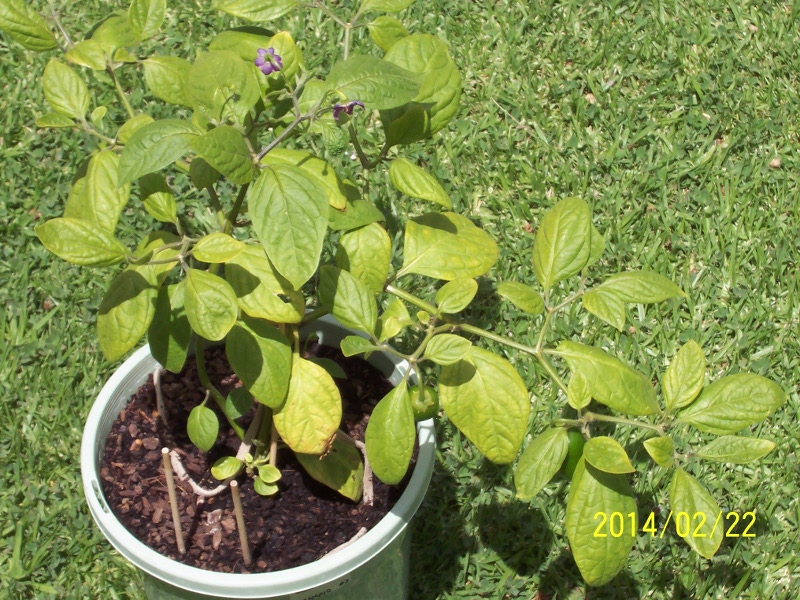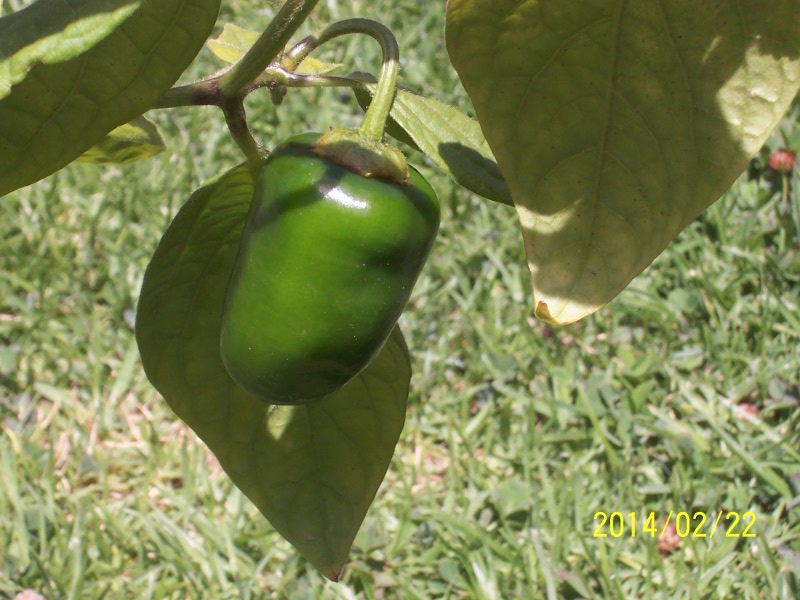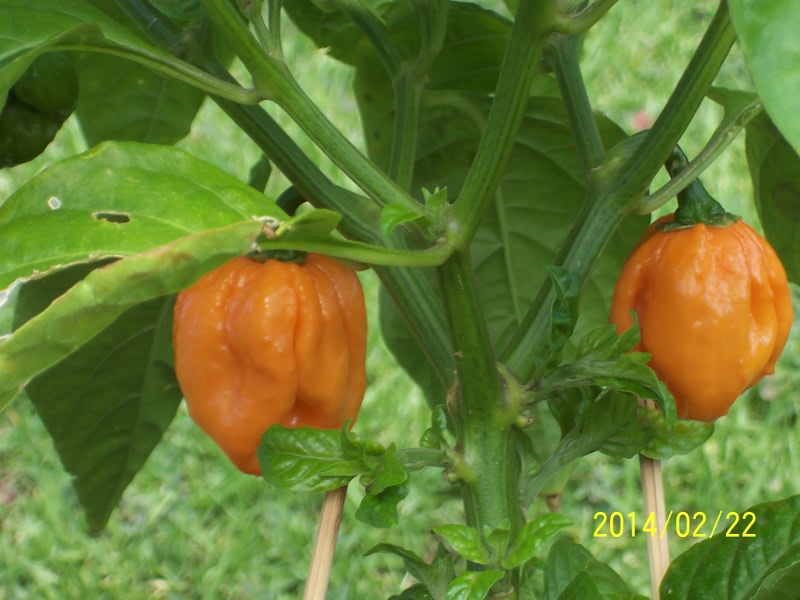This season is mostly a continuation of the last season. My attempts to start a few varieties that I haven't grown have been unsuccessful thus far.
To kick things off here's two of my red Rocoto plants side by side:
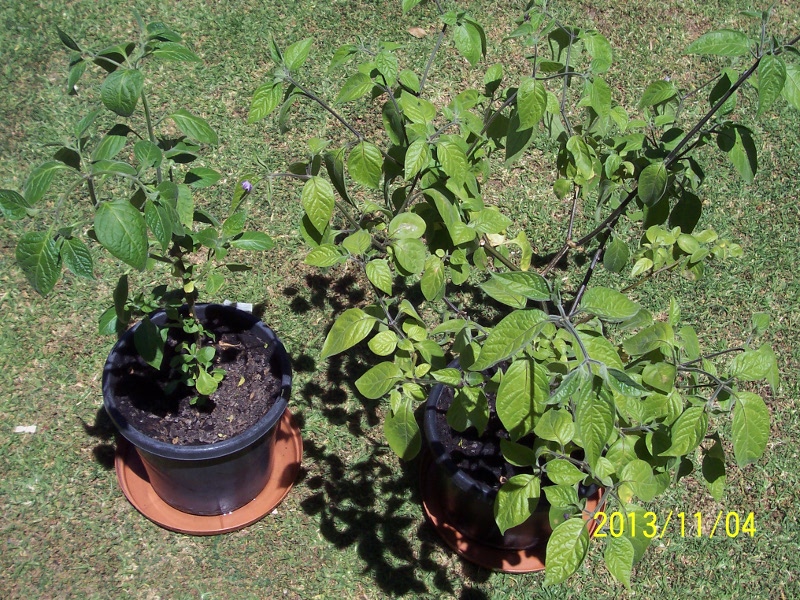
Rocoto Red plant #1 and #3
I'm working towards figuring out why the plant on the right is a paler green.
From 2010 H2:
To kick things off here's two of my red Rocoto plants side by side:

Rocoto Red plant #1 and #3
I'm working towards figuring out why the plant on the right is a paler green.
From 2010 H2:
- Capsicum annuum Jamaican Yellow (1 plant)
- Capsicum chinense Caribbean Red (1 plant)
Capsicum chinense Datil (1 plant)- Capsicum chinense Seven Not, Orange (1 plant; probably hybrid)
- Capsicum chinense Trinidad Scorpion
- Capsicum pubescens NotLocato (2 hybrids; distinct phenotypes)
- Capsicum pubescens Manzana Yellow (1 purchased; yellowish orange strain)
- Capsicum pubescens Rocoto, Orange (2 plants; second orange strain)
Capsicum annuum Ebony Fire (3 plants)- Capsicum annuum Ebony Fire x Capsicum annuum [white flowering unknown] (1 plant)
- Capsicum annuum NotFluorescent Purple (1 plant)
- Capsicum annuum Goat's Weed (1 clone)
- Capsicum baccatum Aji Omnicolor (1 plant)
- Capsicum chinense Bahamian Goat Pepper
- Capsicum chinense Beni Highlands (1 plant)
Capsicum chinense Biquinho (1 plant)- Capsicum chinense Habanero Chocolate (1 plant)
- Capsicum chinense Limón (1 plant)
- Capsicum chinense Scotch Bonnet TFM (3 plants + 1 clone)
- Capsicum chinense Trinidad Scorpion Chocolate (2 plants)
- Capsicum chinense NotTrinidad Scorpion Chocolate (1 plant)
- Capsicum chinense Trinidad Seven Pot (1 plant)
- Capsicum pubescens NotLocato (1 hybrid; fatter phenotype)
- Capsicum pubescens Manzana Yellow (1 clone)
- Capsicum pubescens Rocoto, Orange (2 plants; strain 1 - lighter than strain 2)
- Capsicum annuum Jalapeño
- Capsicum baccatum Blondie (1 plant)
- Capsicum baccatum Ina Red Drop (1 plant)
- Capsicum chinense Biquinho (1 plant)
- Capsicum chinense Habanero Orange (1 plant)
- Capsicum chinense Limón (5 plants )
- Capsicum pubescens Canario (1 plant)
- Capsicum pubescens Rocoto Aji Largo (1 plant)
- Capsicum pubescens Rocoto, Red (4 plants)
- Capsicum pubescens Sukanya (1 plant)
- Capsicum annuum Ebony Fire hybrid (1 plant)
- Capsicum annuum Jalapeño
- Capsicum annuum Ebony Fire (8 sprouts)
- Capsicum annuum Goat's Weed (multiple starts)
- Capsicum chinense Bahamian Goat Pepper (3 plants)
- Capsicum chinense Limón (4 plants)
- Capsicum pubescens Canario (1 clone)
Capsicum baccatum Bishop's Hat (1 sprout)- Capsicum chinense Beni Highlands (1 sprout)
- Capsicum pubescens Not Locato Gen3 (1 sprout)
- Capsicum pubescens Rocoto Aji Largo (1 sprout)
- Capsicum pubescens Rocoto, Orange strain 2 (3 sprouts)
- Capsicum pubescens Sukanya (1 clone)



